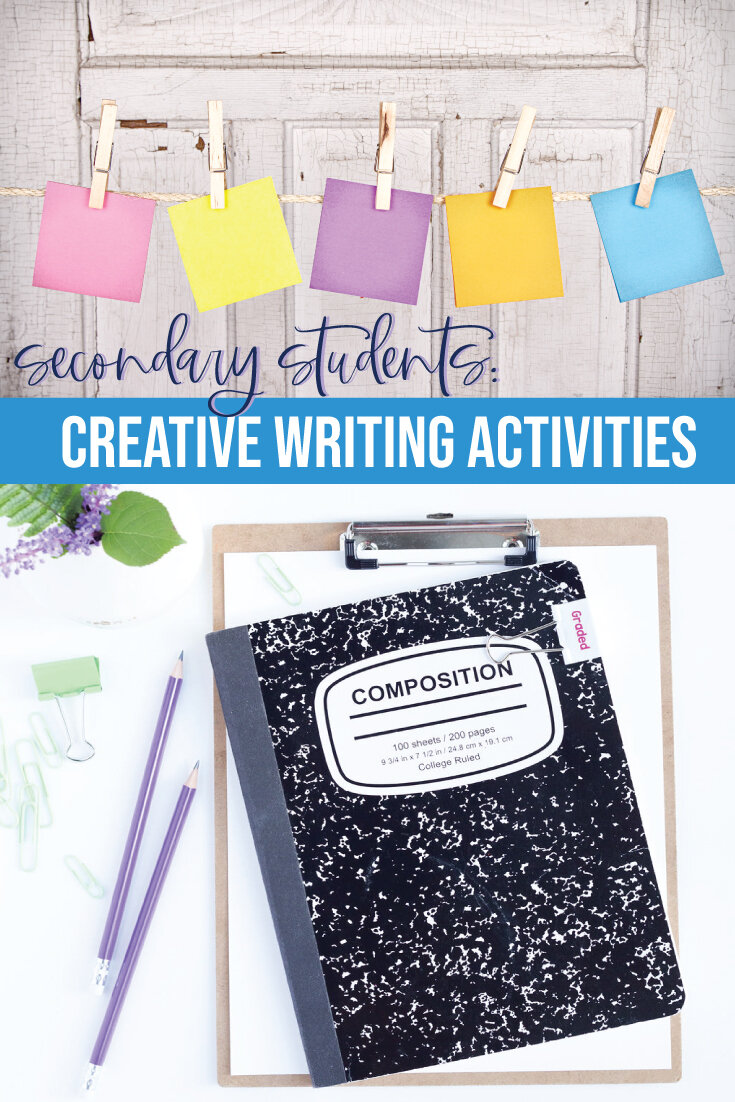Creative Writing Projects: Writing Genres Series
Wondering what creative writing projects to include in a class or unit? Read on!
The more I teach creative writing, the more I see students come alive. I was very unsure of myself when I began teaching a creative writing class last year. As I’ve continued, our projects have expanded and improved.
I’ve had success in many areas, and I’m happy to share them with other teachers. Do you teach creative writing as a class or as a unit? Try adding these three activities to your writing activities.
How-To Article
No, not a basic how-to make a peanut butter and jelly sandwich! Ask students to dive into their circumstances and discover their strengths. Students should reveal tips and tricks that a newbie (to a variety of situations) would not necessarily know. Examples include:
How to talk to a coach about playing more.
How to distance yourself from friends who make unwise choices.
How to handle a medical situation (food allergy, chronic nosebleeds, diabetics) as a teenager.
Teens have unique perspectives. Capitalize on this fact with a how-to paper or speech. Help your students find a facet in which they are experts.
Children’s Book
I switch up the requirements for this every time we create children’s books. I always start with an analysis of children’s literature so that students can see the language used. Then, I provide students with a target age of an audience. Finally, I provide a book option for an audience level. I mean:
ABC, 123 books
Basic rhymes, long a, soft e books
Stories with a basic plot structure (a character overcomes an obstacle with their own strengths)
The more times my students write a children’s book, the more confidence that I have in providing freedom. Eventually, I hope to allow students to choose their audience and type of story. We even work on character development because the shorter format is less intimidating to students.
Picture Inspiration
Pictures can be such an inspiration and wise brainstorming method for creative writing projects. Sometimes students (like all of us!) fall into a slump with writing. Pictures can provide a new chance to brainstorm, a fresh approach.
For instance, students often run into the very common problem of stereotyping characters. Adding typical and worn stereotypes might be easy, but what if students analyzed and approached characters in a new way? Talking through characterization with pictures can get students “unstuck” with their writing.
Same situation with setting: are students repetitively and directly stating the setting rather than incorporating the setting naturally? All of these elements of creative writing are difficult, which is why I explain that all writers struggle with certain elements, and provide pictures to inspire young writers.
And that’s it! These creative writing projects should be easily adaptable for all ages and abilities.
Related Posts
Teaching and Assessing Creative Writing in High School
This narrative writing presentation covers the writing craft of a narrative, such as tone, dialogue, precise language, pacing, description, sensory language, and figurative language. It includes a graphic organizer for taking notes and brainstorming.
ABOUT THE AUTHOR
Lauralee Moss is creator Language Arts Classroom and author of The English Grammar Workbook.
When she is not teaching or writing, she is probably reading, drinking coffee, chasing her three kids and two dogs, or binge-watching documentaries with her husband.
She teaches high school English full-time in Central Illinois. She has worked in a variety of schools for the previous decade. Visit her on Instagram or Facebook.




